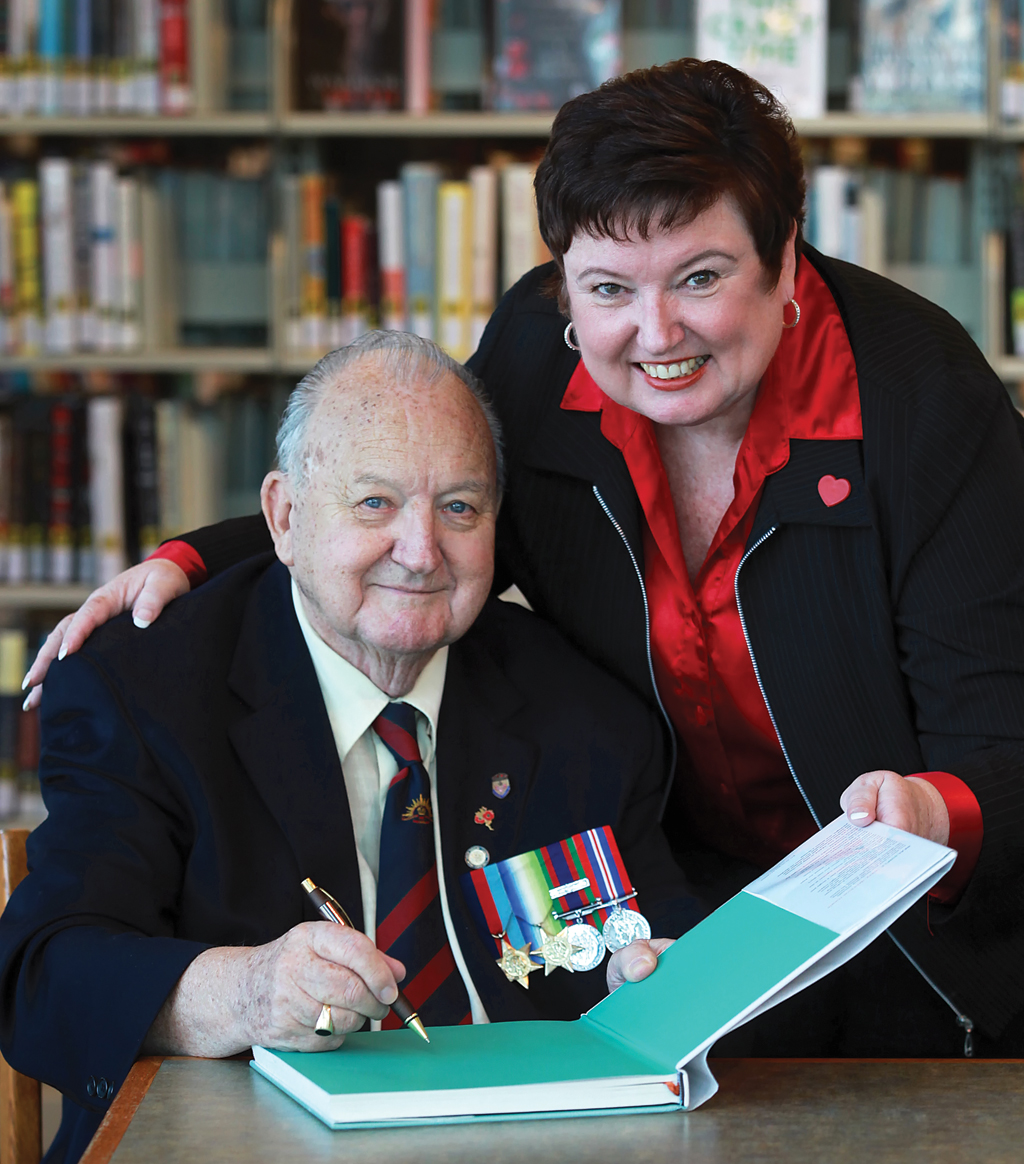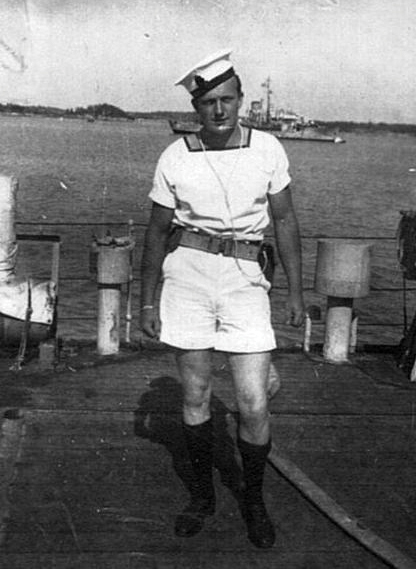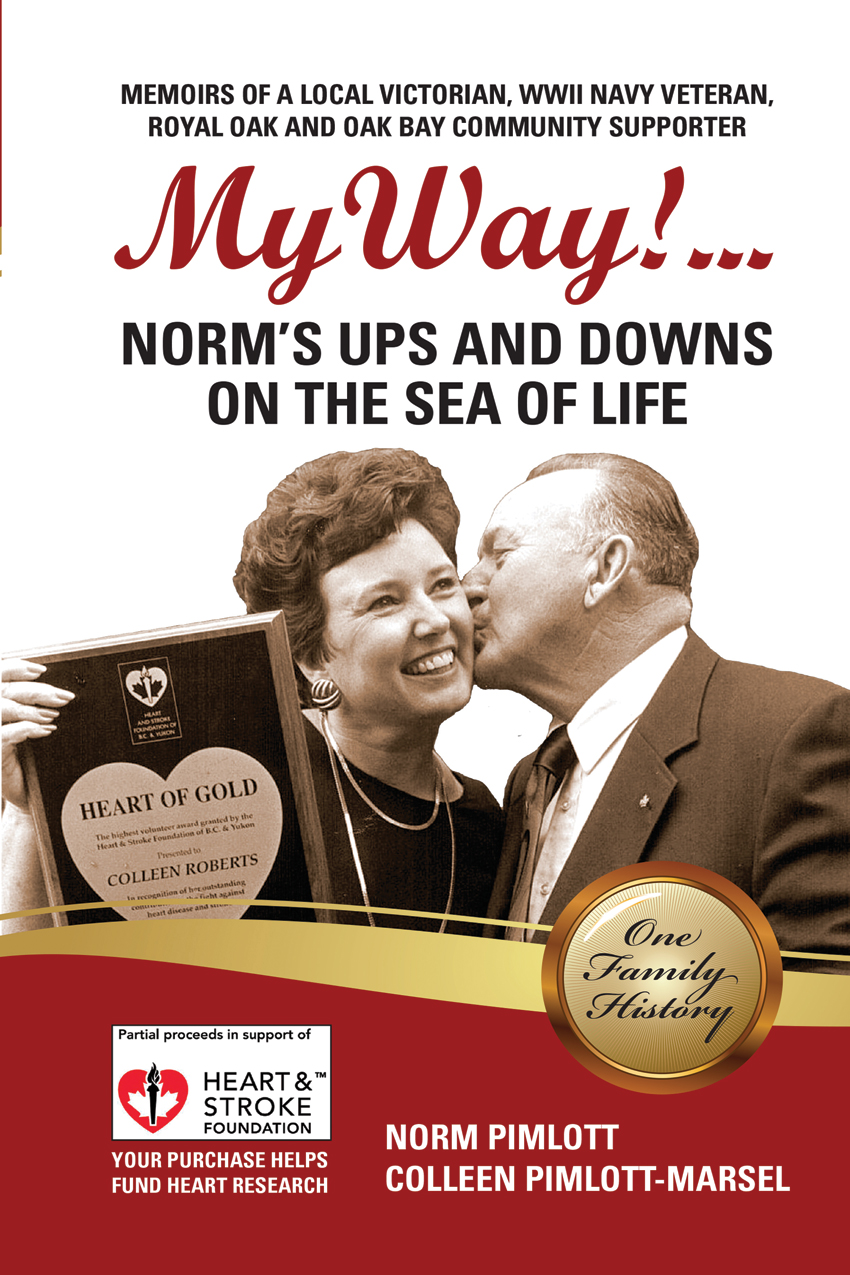Veteran Recounts Battle of the Atlantic
By Lookout on Oct 15, 2021 with Comments 0
Peter Mallett
Staff Writer
––
During the Second World War, Norman Pimlott served as a naval gunner onboard His Majesty’s Canadian Ships Gatineau (1942), Saskatoon (1943), and Trois-Rivières (1944). Afterwards, he raised a family, built a successful life as a businessman, was employed with the Department of Veterans Affairs as Chairman of the Pension Review Board of Canada, and became a municipal politician. Now, at the age of 96 Norm is adding one more profession to his credentials: author.
The Canadian navy veteran decided to share his experiences by detailing life at sea aboard Canadian warships and the exploits defending convoys during the Battle of the Atlantic, the longest continuous military campaign of the war. His book is titled My Way… Norm’s ups and downs on the Sea of Life.
Norm enlisted at a tender age and served more than three years with the Royal Canadian Naval Volunteer Reserves (RCNVR). “The War Years were long and arduous,” writes Pimlott. “Somehow, in spite of the many hardships during the war and long hours of duty in all kinds of weather, it still seemed to bring out the best in the young men I was privileged to serve with.”
A new adventure
Born on the 4th of July 1925 at St. Joseph’s Hospital, Victoria, Norm was youngest of seven children. He joined the Reserve Army at the age of 14 before transferring to the RCNVR two years later in 1941. Shortly afterwards, he was given 24 hours’ notice to report to duty at HMCS Naden in Esquimalt. Norm was hastily inoculated then transported first to Sydney N.S. for basic training at HMCS Protecteur II, then to Cornwallis for additional instruction.
“I found myself in a new adventure in the navy,” he recalls. “I was with 100 guys who were also new to the military. We slept on hard curved wooden seats on the train to Sydney [N.S.].”
When Norm arrived at the training base in Cornwallis he received extensive training in seamanship, gunnery, wire, rope splicing and signalling.
Norm was assigned the job of gunner during convoy escort duties in the North Atlantic. He operated the Oerlikon 20-mm auto-cannon. Though primarily designed for anti-aircraft defence, RCN ships frequently employed the ‘pom-pom’ as an effective weapon against U-Boats.
In the North Atlantic both the weather and sea were also formidable enemies. During one fierce storm Norm was nearly washed overboard when several waves pounded him at his workplace on the decks of the minesweeper HMCS Trois-Rivières. “I put my arm in the cartridge holder for the depth charges and went under the waves: I thought for sure I was going to die,” he recalls. Moments later his shipmate and friend George Beattie pulled him to safety. After surviving the storm and arriving in Newfoundland they came alongside their sister ship HMCS Noranda. That’s when Norm learned that another of Trois-Rivières’ sailors had been lost at sea, taken by a rogue wave during the same storm.
Protecting the convoy
There were many instances during the trans-Atlantic convoys when he and his shipmates could have met their end by U-Boat attacks. Such was the case in 1944 when Norm and the crew of Trois-Rivières were replaced on their anti-sub deployment by HMCS Shawinigan in November. Days later Norm was horrified to learn that Shawinigan had been torpedoed by a German U-boat resulting in the loss of 91 Canadian sailors.
The convoys delivered troops, supplies and armaments to circumvent the German’s naval blockade of Great Britain. Protecting the convoys came with a heavy cost: the majority of the approximately 2,000 RCN members killed during the Second World War died protecting them.
Norm was also involved in one of the largest convoys of the war. In 1943 he set sail onboard HMCS Saskatoon from New York, to Newfoundland and then Great Britain with an estimated 156 ships. Norm remembers how tankers were positioned in the middle of convoys to conceal them from enemy submarine attack. They were ringed by merchant ships and freighters, positioned on either side then defended by four to six warships on the outside flanks of the convoy. “The escort ships would patrol in a zig-zag pattern for protection against torpedo attacks,” he recalls.
“The merchant ships were loaded with tanks and planes and would travel at a group speed of 10 or 11 knots in the convoy,” says Norm. “Older ships could only travel at five or six knots and nobody liked this because by slowing us down it would take us longer to reach our destination and provide the German’s more opportunity to intercept and torpedo the convoy.”
After three-and-a-half years at sea it looked as though Norm’s military career might have come to an end. He faced a possible medical discharge after a 350 lb. depth charge came loose at sea during a severe storm and crushed Norm’s ankle. He had volunteered for service in the Pacific and the injury put that in jeopardy. While convalescing the issue was decided by the United States’ atomic bombings of Hiroshima and Nagasaki and the resulting surrender of Imperial Japan in August, 1945.
Norm never forgot his days at sea, both the good times and bad. The friends he made in the navy became friends for life. “The camaraderie among us was fantastic,” he said. “It didn’t matter what background you came from; the men onboard the ship came to respect each other for who we were. Close bonds were developed between fellow war veterans, like a brotherhood, and many of us have remained close friends for many years.”
After the War
My Way was edited and co-authored by Norm’s daughter Colleen Pimlott-Marsel. The book incorporates first-hand accounts of her father’s life, before, during and after the war. “The book reveals the type of man my Dad has always been,” said Marsel. “Whatever he chose to do, he did well. and always with a view to improving things for others.”
Norman Pimlott currently resides at Broadmead Care’s Veterans Memorial Lodge in Victoria.
––––
Filed Under: Top Stories
About the Author:








